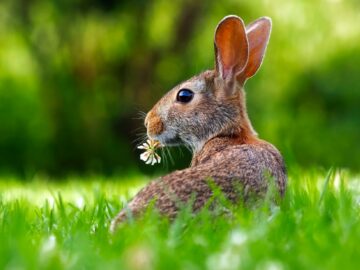Budgerigars, which many of us refer to as budgies or common parakeets, are among the most prominent birds in the world of pets. These adorable little birds have feathers as colorful as their personalities. They’re fun to watch and even have at home, and they’re also rather bright!
Budgies are also interesting to learn about. Did you know that these little parrots are the third most popular pet in the world, just trailing behind dogs and cats? If you want to know more facts about them, read on!
Bubbly Budgerigar Facts to Share with Your Family
Budgerigars are bubbly birds that are always a treat to see. If you don’t have some of these small parrots in your home, you likely know someone who lives with them. Let’s explore some interesting facts you can share with your loved ones without further ado!
Budgerigars Belong to the Family of True Parrots
Budgies belong to the true parrot family, along with tiger parrots, broad-tailed parrots, pygmy parrots, lorikeets, and lovebirds. At an average of around seven to eight inches (18–20 cm) from their beaks to the tips of their tails, budgerigars are among the smallest parrots.
Some people also call budgies “parakeets,” but numerous other small- to medium-sized parrots are called the same name. There are many types of parakeets, and some can get quite large. The Alexandrine parakeet, for example, can grow up to 23 inches (58 cm) long. Because of this, it’s best to call budgies by their name.
Courtesy of Penphoto
There Are Two Types of Budgerigars
Two types or “breeds” of budgies exist the traditional (pet-type) budgerigars and the English (show-type) budgerigars.
Traditional budgies are smaller and slimmer than the English variety. They’re much closer to budgies in the wild, which are native to Australia. The larger English budgie is more colorful and laid-back, as they were specifically bred for shows and exhibitions. However, they are more expensive and have shorter life spans.
Courtesy of jLasWilson
Budgies Come in Over 30 Color Types
Although there are only two main types of budgerigars, they come in many different color combinations: around 32 unique ones exist. Some budgie color mutations include violet, greywing, goldenface, cinnamon, and opaline.
However, budgerigars have two main color subgroups at their base: yellow-based and white-based. Wild budgies are primarily yellow and green, but through selective breeding, we now have mainly white-and-blue budgies! How cool is that?
Courtesy of Mustafa_Fahd
Budgies Are Social Birds
Budgerigars, like many parrots, are highly social animals. In the wild, these birds live in flocks with hundreds of individuals migrating and feeding together. Because of this, they require a lot of interaction with others of their kind. They also readily socialize with humans, which makes them excellent pets!
Courtesy of TheOtherKev
Budgerigars Have Great Vision and Hearing
Budgies have eyes on the side of their heads, and each eye can move and see independently of the other. This is called monocular vision, and it’s a helpful ability for these birds because they need to keep an eye out for other animals that may want to hunt them.
Budgies’ eyes give them an excellent sense of vision, and their brains can process over 150 images per second. In contrast, humans can only process 16! Now, that’s a surprising fact about budgerigars.
Budgies also have a keen sense of hearing and can hear sounds ranging from 400 to 20,000 Hz. They can also remember specific sound sequences, which leads us to our next interesting budgie fact.
Photo by Julius Weidenauer
Some Budgerigars Can Talk
Like many parrot species, budgerigars can also mimic human speech! However, this ability seems to be limited to males. This is because, in the wild, males use their unique vocal skills to impress females.
Because budgies are intelligent and can remember specific sound sequences, they can also have an extensive vocabulary. The Guinness World Record for the largest vocabulary of any bird belongs to a male budgerigar named Puck. Puck knew 1,728 unique words!
Courtesy of Bluebudgie
Budgerigars Can Rotate Their Heads by 180 Degrees
Budgerigars have extra bones in their necks, allowing them to rotate their heads by 180 degrees. This means you can stand behind a budgie, and it’ll still see you!
This is a helpful ability in their natural habitats because it helps them scan the areas around them. This way, they’ll see predators from any direction and fly away.
They also sleep with their heads rotated by 180 degrees. They puff themselves up, turn their heads to their backs, and hide them beneath one of their wings. How cute is that?
Courtesy of smoms_photography
Budgerigars Are Migratory in the Wild
You can typically find wild budgies in Australian grasslands, savannas, grassy woodlands, farmlands, and open forests. However, budgerigars don’t just settle down on one territory in the wild. Instead, they’re nomadic and move from place to place.
Budgies also migrate north during the cold winter months, as this helps them find places with more food and water. Flocks of budgies typically look for areas with lots of rain and seeding plants.
Courtesy of Paislie
Budgies Usually Mate for Life
Budgerigars are typically monogamous, which means they only choose one partner for life. This is why some people call them “lovebirds,” but the term is more commonly used for a separate group of small parrots.
In the wild, budgies nest in holes and cavities in tree trunks or logs. Meanwhile, captive ones typically need a breeding box. They can breed at any time of year but typically do so after rainfall because food is abundant.
Mommy budgies often lay four to eight eggs per clutch. She will incubate these eggs, which hatch after around 18 days. The dads also stick around and help feed the chicks.
When budgie chicks hatch, they’re featherless and blind, utterly dependent on their parents. However, they grow pretty fast. They often stay in the nest until they’re around 30 to 40 days old, but they still need their parents to protect them. They’re fully independent when they’re nine months old and full-fledged adults when they reach the one-year mark.
Courtesy of Lichtsammler
Frequently Asked Questions on the Budgerigar Bird
How long do budgerigars live?
In the wild, budgerigars typically live for around five years. However, pet budgies generally live for five to eight years. In some cases, they can even live past ten years!
One exceptional case is a budgerigar named Charlie, who lived up to 29 years and two months. He has the Guinness World Record for the oldest budgie in captivity.
How can you tell if a budgie is a boy or a girl?
Budgerigars have featherless, wax-like areas around their nose above their beaks. These areas are called “ceres.” You can tell if a budgie is a boy or a girl by looking at the color of its cere. Males have blue ceres, while females have reddish-brown or white ceres.
Do budgerigars sleep a lot?
Budgerigars spend around 10 to 12 hours sleeping. They’re diurnal animals, which means they’re active during the day and asleep at night.
Is it fine to keep one budgie?
Budgerigars are highly social birds, so it’s best to keep more than one in your home. Watching them interact with each other is entertaining, and it’ll help prevent them from being lonely when you’re not around.
What do budgies eat?
Budgerigars have a widely varied diet in the wild. They eat various seeds, fruits, and plants. It’s also best to give them a selection of pellets, vegetables, and a small amount of fruits in captivity.
If you want to give them the best possible diet, Pet Co offers the best bird seeds, treats, and other special bird food.







